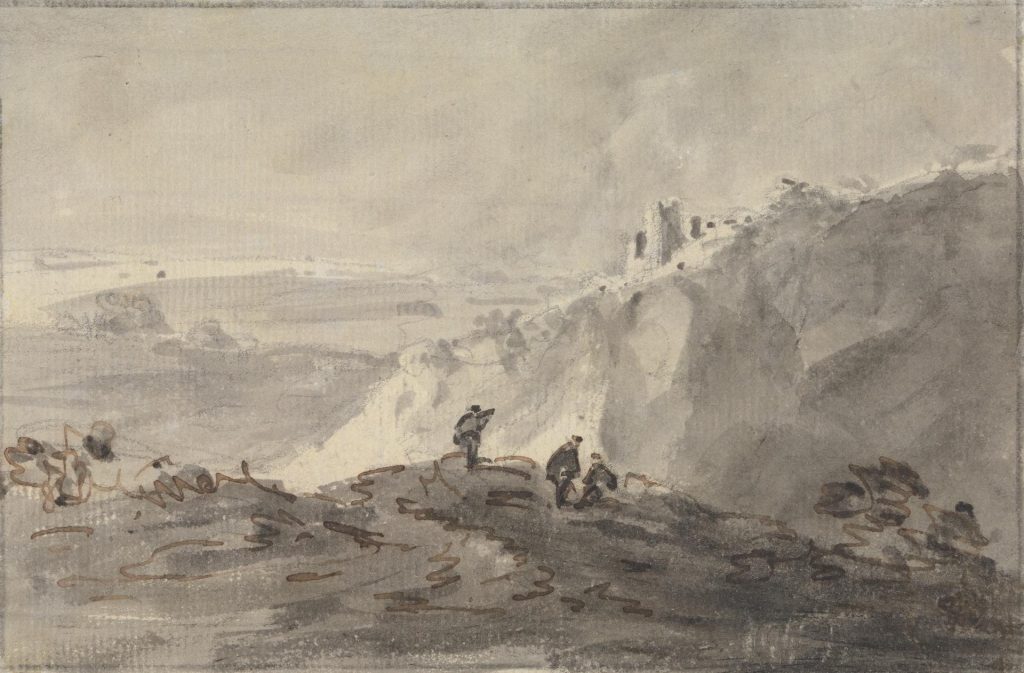As used in aesthetic theory, this term refers to an ideal type of landscape that contains elements of pleasing variety, wildness and irregularity, but is less awe-inspiring than the sublime. Enthusiasm for the picturesque evolved in part as a reaction against Neoclassicism, with its emphasis on formality, proportion, and symmetry. The theory of the picturesque was developed by William Gilpin and Uvedale Price, who published An Essay on the Picturesque as Compared with the Sublime and Beautiful in 1794 .
 William Gilpin. Three Figures in a Hilly Landscape with Ruins, Beyond. 1745-48. Gray wash with pen and ink over graphite on paper. Yale Center for British Art, New Haven.
William Gilpin. Three Figures in a Hilly Landscape with Ruins, Beyond. 1745-48. Gray wash with pen and ink over graphite on paper. Yale Center for British Art, New Haven.